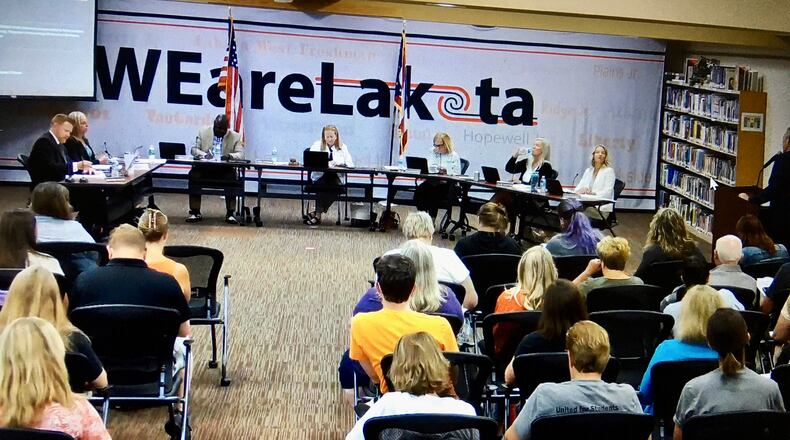Board member Darbi Boddy, however, offered a motion to her fellow board members to have the district become more involved in possible firearms training beyond Ohio’s new minimum requirements for school staffers.
They, however, voted 4-1 to table Boddy’s motion with some members saying her resolution was premature given the board has not yet held its public discussions — including any with Lakota school employees and school families — regarding the possibility of taking any action toward using the new state option.
Pushed in large part by May’s Texas school shooting massacre, Ohio’s legislators earlier this month passed a previously dormant bill that now stipulates significantly fewer handgun training hours for school employee volunteers should their local school boards decide to protect school buildings in that fashion.
It’s an unprecedented development in the now accelerated evolution of how Ohio’s 613 public school systems may now combat an armed attacker and throws the onus on to local school boards and other district leaders to enact new security policies if they choose to do so.
Board member Kelley Casper said Boddy’s proposal was “putting the cart before the horse.” “It’s premature. We haven’t made a decision to arm staff …,” said Casper.
Lakota Board of Education President Lynda O’Connor said Boddy’s motion “was very vague.”
Moreover, said O’Connor, “no decision has been made” by the board regarding the new state option now available to all Ohio public school districts.
“There are still a lot of conversations to have,” she said.
Lakota school parent Mike Greer echoed objections voiced by other public members to the idea of arming trained school staffers.
“It’s madness. If you want an armed individual in the schools that individual needs to a trained (police) officer,” Greer told the board.
No members of the public spoke in favor of arming school staffers.
In other board action, the members unanimously approved promoting assistant treasurer Adam Zink, who has been with the district since 2016, to replace departing Treasurer Jenni Logan whose last day will be July 31.
“I have learned from the best, working with Jenni Logan, and look forward to this new opportunity in my career with Lakota,” said Zink, who will earn $150,000 in the first year of his five-year employment contract.
O’Connor said of Zink: “Adam has worked closely with Jenni Logan for several years and is deeply involved in all aspects of Lakota’s finances.”
“The board has the utmost confidence in Adam and his commitment to continue Lakota on a path of fiscal responsibility for our taxpayers.”
Lakota officials released a statement noting that during Zink’s tenure at Lakota and working alongside Logan, the district has continued to receive the Auditor of State Award with Distinction for eight years and has achieved a balanced budget for 10 consecutive years.
About the Author

